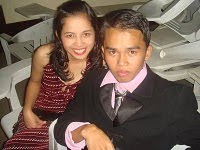Alternative Assessment
Alternative assessment is any type of assessment in which students create a response to a question or task. (In traditional assessments, students choose a response from a given list, such as multiple-choice, true/false, or matching.
Alternative Assessment Techniques
clipboard Observation
You already walk around the room monitoring students as they work in groups or on individual assignments, so why not take it a step further and use your observations for assessment purposes? Students are more likely to show depth of knowledge when conversing with others. As teachers, we know that a group of students talking often means a group of students off task. However, when placing students in a group to work, we also increase their chances of having meaningful conversation about the lesson or unit. As the teacher, it is our duty to continually monitor not only their behavior, but also their work and conversations.
An easy way to keep track of what students are and are not doing is by using a clipboard. You can do this in two ways:
1. Use index cards (best for elementary teachers)
2. Use a spreadsheet (best for middle & high school teachers)
Using Index Cards
* Tape one index card for each student on the clipboard. You want to tape the top of each card vertically along the clipboard.
* Write each student's name (in some order - by row or table, OR alphabetically) one on a card.
* For each observation, date the entry and make a short, but detailed, statement of what you just observed. Only record notable incidents in both behavior & academics.
Clear and Unclear Windows
Have students fold a piece of paper into two or more sections. Label half of the paper as "Clear Windows" and the other half as "Unclear Windows". In the clear window boxes students write what they have learned and understand about the concept or skill. In the unclear window boxes students write about the concepts or skills they don't understand or need clarification. This will provide you with information which will help you plan for future lessons.
KWL Chart
Students fold a piece of paper into three sections. Label each section K, W, and L respectively. At some point in your introduction of a new topic or unit, have students fill out the "K" section with what they already know. Next, have them complete the "W" section with questions of what they'd like to learn or know more about. Use these sheets to help you plan your lessons so that questions of interest to students are covered and so that you don't repeat information they already know. When the unit or lesson is through, have students complete the "L" (what I learned) section as their assessment.
Semantic or Mind Map
Students place the main topic or concept in a circle in the middle of a piece of paper. Each detail about the concept is then a branch off of the main circle. Each of those branches may have further information which would mean another branch of connecting facts or details. Using this as an assessment can show you how a student's knowledge is organized in his or her brain, or if they don't understand the concept at all. Students can either draw pictures to represent the information, or use words. This provides an outlet for both left and right brain learners.
Checklist
When students have a lengthy assignment, a helpful tool for teachers to use when evaluating student progress is to have a checklist. Due dates can be given for each item along the way, or the teacher can request to see the checklist along with the corresponding work at the end of the project. A checklist also helps you express your exact expectations for student work.
If you are interested in reading a discussion about why it is important to vary your assessment techniques, check out our article entitled "Getting Out of the Assessment Rut"!
Authentic Assessment
"Authentic assessment is an evaluation process that involves multiple forms of performance measurement reflecting the student's learning, achievement, motivation, and attitudes on instructionally-relevant activities. Examples of authentic assessment techniques include performance assessment, portfolios, and self-assessment." American Library Association
Components of Authentic Assessments
Rule (2006) says that every authentic assessment will be comprised of 4 main components:
* They involve real-world problems that mimic the work of professionals.
* They include open-ended inquiry, thinking skills, and metacognition.
* They engage students in discourse and social learning.
* They empower students by choice to direct their own learning.
Synonyms:
* Authentic: genuine, real, valid, bona fide
* Assessment: appraisal, evaluation, measurement, judgement, review
"Authentic assessments present the student with the full array of tasks that mirror the priorities and challenges found in the best instructional activities: conducting research; writing, revising and discussing papers; providing an engaging oral analysis of a recent political event; collaborating with others on a debate, etc." Through authentic assessment, students are more engaged in the task and a teacher can be more confident that the assessment she/he gives is meaningful and relevant.
Furthermore, students are more relaxed during authentic testing, experiencing less test anxiety and nervousness. Authentic testing is a more casual experience, where the student may be communicating with the teacher or other students in the process during which time learning and the transfer and building of knowledge continue to occur (Suurtamm 507).
Authentic Task: An assignment given to students designed to assess their ability to apply standard-driven knowledge and skills to real-world challenges
In other words, a task we ask students to perform is considered authentic when 1) students are asked to construct their own responses rather than select from ones presented and 2) the task replicates challenges faced in the real world. (Of course, other definitions abound.)
Traditional ------------------------------------------- Authentic
Selecting a Response ----------------------------------- Performing a Task
Contrived -------------------------------------------------------------- Real-life
Recall/Recognition ------------------------------ Construction/Application
Teacher-structured ------------------------------------ Student-structured
Indirect Evidence ------------------------------------------- Direct Evidence
Subscribe to:
Post Comments (Atom)

No comments:
Post a Comment